By
Eric Vandenbroeck and co-workers
The 'Chinese Nation'
As we early on have
seen, it was in the late Qing Dynasty and the early Republic of China that became
the formation stage of modern Chinese nationalism and the stage of the
proposition and initial usage of the concept of the 'Chinese nation.' Modern
Chinese nationalism developed around the period of the May 4th Movement. And
although Mao Zedong in March 1953 still referred to "Han chauvinism"
to criticize his rival Kuomintang party, this drastically changed following the
1989 Tiananmen crackdown when history
and memory were developed to become a new nationalistic power now for
the CCP.
The centerpiece of
this post-1989 state-sponsored revival of Chinese nationalism was the so-called
patriotic education campaign, a comprehensive program that (even though the
“China proper” of today previously was just one 'part' of the Manchu-run Qing Empire) revamped history textbooks,
reconstructed national narratives, and renovated historical sites and symbols
throughout China.
Where the anti-Mao
Guomindang/KMT leadership deliberately used fear of the loss of territory in
the 1920s and 1930s to rally political support, Deng Xiaoping re-introduced the
Guomindang's “one-hundred-year
history of humiliation” narrative as a new source of legitimacy of the
CCP’s rule and the unity of the 'Chinese' people and CCP society. This was
crowned by a new ongoing yearly National Humiliation Day.
Hence as we have seen
in part one and two, the Chinese
nationalism that once defined Mao Zedong’s China more recently has been
replaced with a form of ethnic nationalism that focuses inward and looks to the
past in a “search for roots” (xungen [寻根]).
Today's creation and the expansionism of China
In a very well
researched overview of Modern Chinese nationalism Dahua Zheng from the Chinese
Academy of Social Sciences, Institute of Modern Chinese History in Beijing
details how the modern notion of China dated to the late nineteenth
and early twentieth centuries when reformers and revolutionaries adapted
foreign ideas to fortify China against the depredations of Western imperialism.
Whereby in Dahua Zheng's overview, one can also see how this nation-building
project, projected back onto the various empires and states that occupied the
present-day territory of the People’s Republic, and as we have seen, planted the seeds of many of the country’s
most fraught problems, from Xinjiang to Taiwan to the South China Sea.
The Qing dynasty, the
last of China's imperial dynasties, had created a multi-ethnic realm, of which
‘China proper’ – the fifteen provinces of the defeated Ming Dynasty – was just
one part. The previous Ming state lasted for almost 300 years, but it had not
used China's name, either. Before the Ming, those territories had been part of
a Mongol Great-State that had stretched as far as the Mediterranean: East Asia
was just one part of its domain. Before the Mongols, they were controlled by
the rival Song, Xia, and Liao states. These had occupied various parts of the
territory we now call China and they, in turn, were different from the
fragmented conditions that existed before them.
Each state was
different from its territorial extent and its ethnic composition, but each
needed to present itself as the legitimate successor to its predecessor.
Therefore, to retain the loyalty of officials and the wider population, each
new governing elite needed to claim continuity with tradition. To receive the
necessary ‘mandate of heaven,’ it had to speak in certain ways and perform the
rituals expected of a ruling class. In certain eras, this may have been a
genuine belief; in others, it became a political theatre, but it became
outright deception in some. The Mongols and Qing elites inwardly retained their
Inner Asian cultures while externally presenting themselves – at least to a
portion of their subjects – as heirs to the rule's Sinitic traditions. Where,
then, was ‘China’? Until the very end of the nineteenth century, rulers in
Beijing would not even have recognized the name ‘China.’
Both Zhongguo and Zhonghua are translated into English as
‘China,’ but they carry particular Chinese meanings. Zhong Guo is literally the
‘central state’ of an idealized political hierarchy. Zhong Hua is literally the
‘central efflorescence,’ but its more figurative meaning is the ‘center of
civilization,’ an assertion of cultural superiority over the barbarians in the
hinterland. These terms have deep historical roots, but they were not used as
formal names for the country until the end of the nineteenth century.
It is only after the
Republic of China's founding and its intellectuals who had traveled abroad and
were able to look back on their homeland from afar promoted the establishment
and formation of the concept of “Chinese nation.” This is what among others Chang
Naide pointed out in his 1986 book, A Brief History
of the Chinese Nation; Somebody called it Xia(夏);
somebody called it Huaxia(华夏); somebody called it Han people(汉人) or Tang people(唐人). However, Xia(夏), Han(汉), and Tang(唐) are all
dynasty names rather than nation names.1
Who were the people
who founded the Qing state? They were people from what is now northeastern
China, and they spoke a Siberian language: Manchu. In 1644 they had ridden out
of their chilly homeland and taken over the moribund Ming state. They were
people from outside the Zhong Guo, but they quickly realized that if they were
to rule the former Ming domain successfully, they would have to adopt some of
their predecessors' techniques. Yet even while they did so, they remained
Manchu. They continued to rule in an Inner Asian style, which the American
historian Pamela Crossley has called ‘simultaneous ruling.’2 Each part of their
‘great-state’ was ruled differently, according to what was thought culturally
appropriate. Yet at its center, the Manchu language and the script remained the
state's official language and script. The new elite sought to preserve their
traditions: riding, archery, and hunting; rites, prayers, and sacrifices to
ancestors. More importantly, they maintained Manchu regiments – known as banners
– to control the society they had conquered. In effect, from the
mid-seventeenth century, the Zhong Guo became a Manchu ‘great-state’ province.
Pictured below a silk
scroll on display in the Shanghai History Museum. Note the Manchu script (left)
used alongside the Chinese characters. The document is the ‘Imperial Mandate to
Parents of Liu Xixiong,' dated 1780:

The following are
emblems of two of the Manchu ‘banners’ on display at the former mansion of
Prince Gong (Manchu name: Yixin) in Beijing. All Manchu and Mongol subjects,
along with some Han, were organized into banners, military units, through which
the Qing Great-State imposed order:
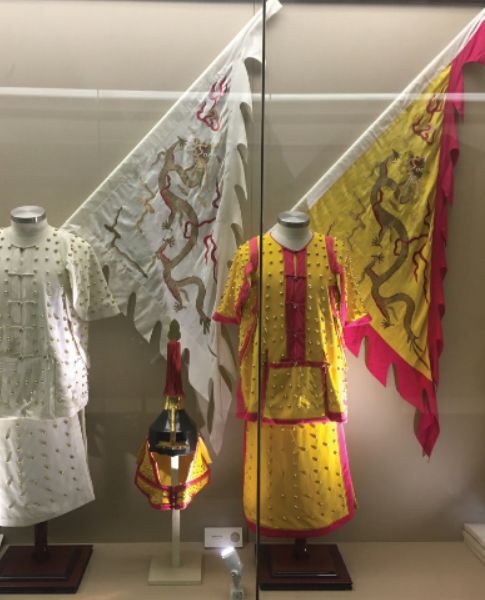
Meanwhile, the Qing
state was busy keeping itself together, keeping out “barbarians” from the north
and west, and trying with mixed success to impose itself on immediate but
determinedly non-Han neighbors Korea, Japan, and Vietnam. Even in the trade of
ideas, China can scarcely claim superiority given how much is imported from
India, Persia, Central Asia, and, most recently, the west.
It was the attacks by
Europeans and Americans on “China Proper” after 1840 and then defeated by Japan
in the war of 1895 that forced the Qing to engage with the outside world on new
terms. Those clashes fused pre-existing Sinitic ideas of an “all-powerful”
ruler with Western ideas of states' separateness to create an idea of
sovereignty as a moral order rather than simply a legal arrangement. In
contemporary China, sovereignty is defended as a moral imperative, a matter of
life and death, rather than a convenient way to organize a complex
international society.
The word 主权 - sovereignty was initially introduced to modern
Chinese vocabulary thru William A. P. Martin's translation of Henry Wheaton's
Elements of International Law in 1864. Previously it was also translated as 薩威棱貼. Martin's translation became definitive and also
traveled to Japan. So this most important term in the international relations
of modern China was coined by an American.
“China proper” – the
former Ming state which the Qing invaded in 1644 – at this point was just one
part of the Manchu-run Qing Empire state. The nationalists had to
invent why the non-Chinese parts – Tibet, Xinjiang,
Mongolia, and Manchuria – should remain part of this new country. People like Zhang Taiyan would
have been happy to discard the outer regions and focus on an “ethnically pure”
center. Liang Qichao and Sun Yat-sen wanted to keep all the territory. This,
ultimately, is the cause of the current unrest in Xinjiang, Tibet, and even
Inner Mongolia.
As we have seen, the
Nationalist textbook writers and
map makers faced a pedagogic and deeply political problem. How could
they persuade a child in a big coastal city, for example, to feel any
connection with a sheepherder in Xinjiang? Why should they even have a
connection? The general purpose of human geography was to explain how varying
environments had created groups with differing cultures. However, nationalism
required all these different groups to feel part of a single culture and loyal
to a single state. It was up to nationalist geographers to resolve the puzzle.
They found two main ways to do so. One group of textbook authors stated that
all Chinese citizens were the same: they were members of a single ‘yellow’ race
and a single nation, and no further explanation was needed. However, a second
group acknowledged that different groups did exist but were nonetheless united
by something greater. Within this group, some authors made use of ‘yellow race’
ideas; some used the idea of a shared, civilizing Hua culture. In contrast,
others stressed the ‘naturalness’ of the country’s physical boundaries.
Underneath Sun Yat-sen
was flanked by the flags of the nascent Republic of China. On the right, the
‘Five Races Under One Union’ flag and, on the left, the ‘Blood and Iron’
eighteen-star flag of the Republican army. On 15 February 1912, the day the
Qing court formally abdicated power.

Thus, we see the two
potential futures for China on the Left Han national flag representing the 18
provinces of the former Ming on the right the flag representing the five races
showing a multi-ethnic future'.

When Angela Merkel embarrassed Xi Jinping
As seen in part one,
the CCP party and state remain insecure as they continue to re-write history,
which was apparent in 2014 German
Chancellor Merkel presented to President Xi an 18th-century German map of China based on a famous 1718 Qing “Overview of the
Imperial Realm.” It only showed “Sinae Propriae”
(China Proper), not the other Qing territories or Taiwan. The Chinese
delegation did not know how to react. The protocol required appropriate
gratitude, but this was not a gift to be celebrated back home. Was it simply an
innocent gesture of goodwill or a deliberate snub by the German government?

The Chinese state
media editors were in a quandary and resolved it in the traditional manner of a
one-party state: they faked the news. They reported the map's gift but then
replaced the picture of the actual map that Merkel had presented to Xi with one
of a completely different map, one that portrayed a much larger territorial
claim. This was actually drawn over a century later, in 1844 by a British
map-maker John Dower, and included the Qing’s eighteenth-century conquests of
Tibet and Xinjiang within the empire’s frontiers.3 In fact, the map showed
frontiers drawn much wider than the People’s Republic's current borders. This
inaccuracy was not a problem for the Chinese media.
This might appear to
be an amusing anecdote on the surface, but it also demonstrates the anxiety and
paranoia that lurk just beneath the surface of contemporary China’s politics.
If Xi had given Merkel a map of eighteenth-century Prussia that excluded most
western Germany, the object would have been treated as an interesting curio.
The People’s Republic’s sense of self, on the other hand, is far too fragile to
admit that the shape of the country may have been different 300 years ago. No
debate over the state’s ‘core interest’ of territorial integrity is permitted,
and the result is absurd denials of any historical evidence that underpins a
different story of the past. The only acceptable version of history is the
invented version that suits the Communist Party’s current leadership's needs.
The party depends on these invented narratives. As it retreated from Maoist
communism in the late twentieth century, it searched for new ways to generate
its citizens' loyalty. One key foundation of its right to rule became
‘performance legitimacy’: the delivery of ever-higher living standards to most
of its population. However, proletarians and bourgeois cannot live by bread
alone, and the party also sought a new guiding idea to fill their souls and
lead them in the right direction. The new people’s opium would be nationalism –
not the kind that makes mobs march through the streets, but an official kind,
defined by those at the top and stressing homogeneity and obedience.
In part two, 'The language wars' buried deep
within the language project fear that China might be too diverse to hold
together. This is a fear with deep roots, yet it remains too sensitive to be
spoken out loud. We can only hear its echoes when Xi and his fellow leaders
talk about the need for a ‘culturally harmonious country’ and constantly call
for ‘unity.’ Disharmony and disunity are the concerns-who-must-not-be-named.
The idea that Hong Kong or Taiwan – or Guangzhou or Shanghai – might have their
own identities stronger than their Chinese national identity is literally
unimaginable for those who lead the People’s Republic.
From the ‘yellow’ race to 'Han' Nationalism
In their book about
Han-centrism by John Friend and Bradley Thayer wrote:
"China is a
hyper nationalistic state and very proud of this fact. This must be recognized
to compel all international actors, states, non-government organizations, human
rights groups, academics, media, celebrities, and individuals, to think through
the consequences of the rise of China for what they believe and value and how
China’s ascent will affect their beliefs and values."4
Although Han Chinese nationalism and Chinese nationalism are
different in terms of ideology, with the latter often focusing on more
multi-racial nationalism, however, due to China's historical and current
control by the ethnic Han Chinese, the two have been connected and frequently
used together. The concept was first debated in the early 20th century; one of
those debating it was Zhang Taiyan, who strongly
opposed the idea of a proposed multi-racial nationalism of Yang Du and Liang
Qichao and stressed the Han ethnic bloodline as evidence for the greatness of
China and rejected any notion for a multiethnic China, being skeptical of
non-Han ethnic groups like Manchus, Mongols, Tibetans, and Turkic Muslims.
Zhang Taiyan strongly criticized non-Han ethnic
groups, notably Manchus, who accused the Manchus and other non-Han peoples as
oppressors and believed they were impossible to be assimilated, if not say,
understanding Han Chinese culture and customs. There were, however, significant
proponents of a multi-racial form of Chinese nationalism as well, and Tibet and
Xinjiang remained independent during the rule of the Republic of China.
As explained, the
early Republic of China was not only the era of the early stage of modern
Chinese nationalism (Zheng, 2006a, b) but also the stage of proposition and initial use of the
concept of “Chinese nation(中华民族).” First, to put forward and use the concept of
Nation of China(中国民族)
was Liang Qichao.
In China’s great race
to the 21st century, Liang was the man with the starting gun. His concept of
Chinese nationalism was pivotal (including in China today) to the May Fourth Movement and
all that came after.
Liang believed the
nation was in an existential struggle with the white race. Talk of division,
therefore, was literally suicidal: strength could only come from intermingling.
There could only be one nation, and everyone in Zhongguo
needed to be a part of it: there was no space for separate identities. In his
view, it went without thinking that the Han were the core of the Chinese
nation, and everyone else just had to assimilate. This didn’t just apply to
other ethnic groups; Liang was equally uninterested in Han's local differences.
Resistance to the outsider was far more important than minor differences
between insiders. Liang’s vision of the nation was both ethnic and cultural.
What kept the Zhonghua minzu together and allowed it
to overcome invaders was its superior culture. This superior culture
assimilated all those with whom it came into contact. Therefore, the history of
the Chinese nation was the story of the progress and expansion of this culture.
Liang downplayed
similarities that could have provided grounds for a different ‘natural’ order.
For example, Mongols and Tibetans share a Buddhist culture, together with
people in Nepal and northern India. Mongol, Tibetan, and Manchu societies share
a tradition of shamanism.
The Islamic Turkic
peoples have cultural connections with peoples all the way west to Istanbul,
and highland ‘Miao’-type minorities can be found throughout Southeast Asia.
These cultures are all quite different from that of the Han people of the
central plains. Still, Liang minimized the differences and emphasized
similarities to highlight the unity of Zhongguo-ness.
As a result, his logic would preserve the Qing’s ‘five ethnicities’ (Manchu,
Han, Mongol, Turkic, and Tibetan), along with their five respective
territories.
These were choices he
made in the early 1900s for clearly political reasons, but the consequences of
those ideas have long outlasted the Qing Great-State. To this day, the Chinese
‘national history’ is usually written as a history of a territory that was not
actually ‘fixed’ until the middle of the twentieth century.
Underneath the
diplomat and poet Huang Zunxian (center) with some of
his family. He was one of the pioneers of the ‘yellow race’ thinking in the
late Qing period but later helped ensure the Hakka people were classified as
part of the ‘Han race.’

The beauty of the
‘Han race’ idea for the revolutionaries also created a huge community of
potential supporters who could be mobilized against a declared enemy: the
ruling Manchu elite. If the Manzu were excluded, then
so were the Mengzu (Mongols) and the non-Chinese-speaking minorities. Indigenous groups were
relegated to the status of ‘browns’ or ‘blacks’ for whom Social Darwinism
predicted only one fate: they could be ignored in the coming struggle.
Increasingly, the revolutionaries – mainly young, male students living in exile
in Japan, mixed old ideas of lineage, zu, with new
racial ideas of biological race – Zhong. The fusion of Zhong and Zu was made
possible by the imaginary figure of the Yellow Emperor: Huangdi became the
father of the zhongzu. However, the question of who
was and was not, a member of the zhongzu (种族 zhǒngzú) was not
always so easy to answer.
Zhang Taiyan tried to establish a social, cultural, and spiritual
identity of Chinese, which could counterbalance the West's dominant influences.
The Republic of China is the name he gave to a newly emerged Chinese nation
after the overthrow of the Qin Dynasty.
The multifaceted
image of the Han Chinese nationalism further developed in the buildup of modern
Chinese statehood. Han Chinese nationalists had created a hostile opinion
towards ethnic Uyghurs and Tibetans, viewing them as dangerous for the Chinese
state due to its cultural differences and lack of sympathy for ethnic Han
Chinese.
Almost every state has
a history that goes back at least 5,000 years in the sense that people have
inhabited most of the earth’s surface for at least that long. The claim of a
5,000-year history for China is intended to link it to the mythical birth-date
of the mythical “Yellow Emperor” in 2698 BCE. The Yellow Emperor was chosen as
the spiritual father of all Chinese by the man who invented the “Han Race” in
1900, Zhang Binglin. Zhang wanted to create a racial
boundary between the Manchu rulers of the Qing Great State and the people he
defined as the “Han,” and he did so in his Qiushu (the “Book of Urgency”) in
which he traced the origin of all the Han to the Yellow Emperor.
This is a racial
vision in which all true Chinese are descendants from a single ancestral stock.
It is quite at odds with all the empirical evidence from genetic and linguistic
research on the very diverse population of the People’s Republic of China. Nonetheless,
it seems to underpin Xi Jinping’s “steamroller” approach to diversity in the
PRC, the enforced homogenization of identity under the banner of the “five
identifications.” A loyal PRC citizen is obliged to identify with the
motherland, with the Chinese nation (Zhonghua minzu),
with Chinese culture, the Chinese socialist road, and the Communist Party
itself. This can only make sense if Xi Jinping believes a single nation has a
single culture.
This thinking was
given extra urgency by incidents of ethnic violence and protest in Tibet and
Xinjiang during the 2000s when several influential figures in the PRC came to
view the notion of separate minzu as a threat to the
country’s future.
This emerging what is
also termed 'continentalism' is in keeping with an expansionist foreign policy
line that has paved the way for a geostrategic outlook oriented towards expansion.
Thus there are
clearly plenty of people, at all levels of Chinese society today, who believe
their state is more than ‘first among equals’ but use a particular vision of
the past as justification for a new imperial outlook. It is made worse by
expressions of Han chauvinism towards foreigners and treating ‘overseas
Chinese’ in these countries as ‘racial allies’ and as tools of state policy.
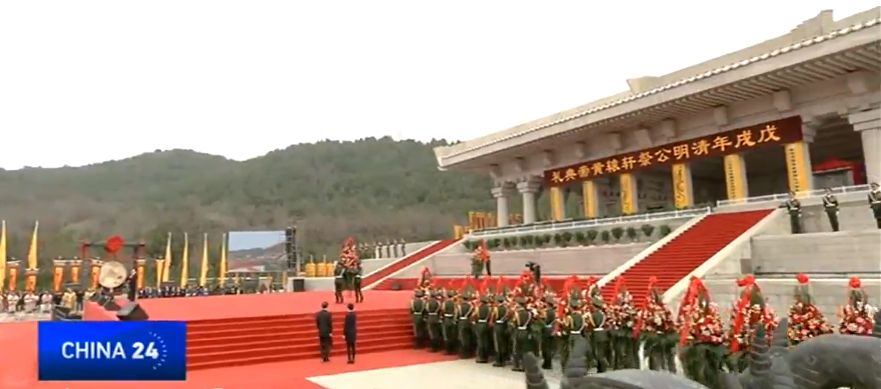
Re-invoked by the
present-day Communist Party of China (CPC), annual ceremonies are held to worship the
imaginative Yellow Emperor.
Due to the coronavirus, this year, to a large degree, was held online.

The origin of
contemporary China’s ‘sovereignty fundamentalism’: a hybrid of Confucian
chauvinism and American legalism. It melds premodern ideas of the cultural
pre-eminence of the Zhong Guo with Western ideas of fixed borders and
independence. At its heart lies a philosophical difference: the Chinese word
for sovereignty, zhuquan ( 主權 zhǔ quán),
carries the literal meaning of ‘the authority of the ruler’ – it is focused
domestically, not internationally. Zhuquan mandates
the continuation of a morally superior culture within the protection of
inviolable boundaries. It is, in effect, tianxia (天下 tiān xià) with
passport controls, tianxia in one country. This is
not an idea that can tolerate intervention in a country’s internal affairs but
is rather a mandate for the opposite: the exclusion of other states and their
‘international norms,’ whether on human rights or climate change.
Memories of the
dynastic rituals of tribute still underpin ideas about political legitimacy in
communist China. The Beijing leadership frequently deploys the performance of
rituals of international respect as a status of delegations attending a ‘Belt
and Road Forum,’ or a G20 summit, are widely publicized and help confer a
modern ‘mandate of heaven’ upon the Communist Party. By contrast, critical
commentary on the party’s performance is kept away from the people. The idea of
international delegations traipsing across the ancestral land, ‘measuring,
reporting and verifying’ its carbon emissions and then telling the world that
Beijing is not living up to an internationally agreed standard remains
anathema. Therefore, the assertion of sovereignty above all else is a means to
avoid disrespect and a loss of domestic legitimacy.
Wang Huning is the
brain behind Xi Jinping, just as he was the theoretician behind Xi’s
predecessors Jiang Zemin and Hu Jintao. He currently sits at the apex of
political life in China: on the Standing Committee of the Politburo. As a law
professor at Fudan University, his first book was entitled Guojia
Zhuquan – ‘National Sovereignty.’5 In it, he argued
that the Chinese word zhuquan pre-dates the Western
concept of sovereignty.6 We have come full circle. Wang’s predecessors fought
in vain to prevent the concept of sovereignty from taking root in Beijing. Wang
now claims China invented it and wants to own and control its meaning. He has
chosen to ignore the roles of both the American diplomat Henry Wheaton and the
American missionary, William A. P.Martin, who worked
to bring the zhong guo (中 国 - Zhōngguó)into the modern
world by re-creating the meaning of zhuquan. This
‘strategic ignorance’ of the foreigners’ intermediary roles enables Wang’s
wider philosophical project: to fill Western concepts with Chinese meaning to
underpin Beijing’s plans for a world based upon the notion of a ‘community of
common critical element of its domestic political messaging. The number and
size and destiny’. It fits neatly with a modern version of tianxia,
in which Beijing sits, once again, at the top of a regional, or even global,
hierarchy. It is a hierarchy open to all, as long as they know their place.
The re-invention of Taiwan
While we have seen
that Chiang Kai-shek initially had no interest in Taiwan, and in his speech on
‘The Anti-Japanese Resistance War and the Future of Our Party,’ Chiang even
argued, ‘We must enable Korea and Taiwan to restore their independence and
freedom. Even more so, Mao's Communist Party had long supported independence
for Taiwan rather than reincorporation into China. At its sixth congress in
1928, the party had recognized the
Taiwanese as a separate nationality.
While China could not
afford a military conflict with the USA but could if wanted invade Taiwan, also
there its arguments as having my rights in reference to Taiwan are baseless.
Underneath map of the
South China Sea drawn by Bai Meichu (who probably never went to sea in his life) for his
New Atlas of China’s Construction in 1936. James Shoal (off Borneo), Vanguard
Bank (off Vietnam), and Seahorse Shoal (off the Philippines) are drawn as
islands, yet in reality, they are underwater features. Almost none of the
islands that Bai drew in the central and southern parts of the South China Sea
actually:
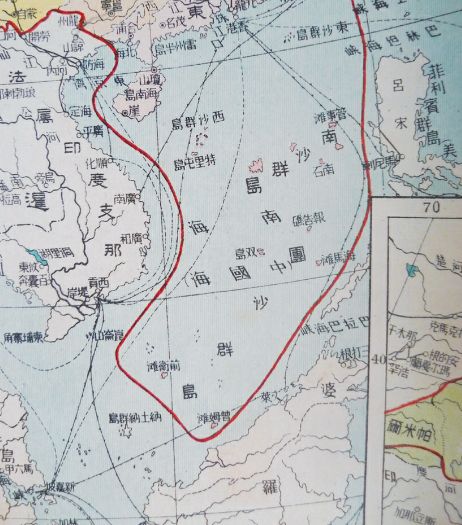
The reinvention of the South China Sea
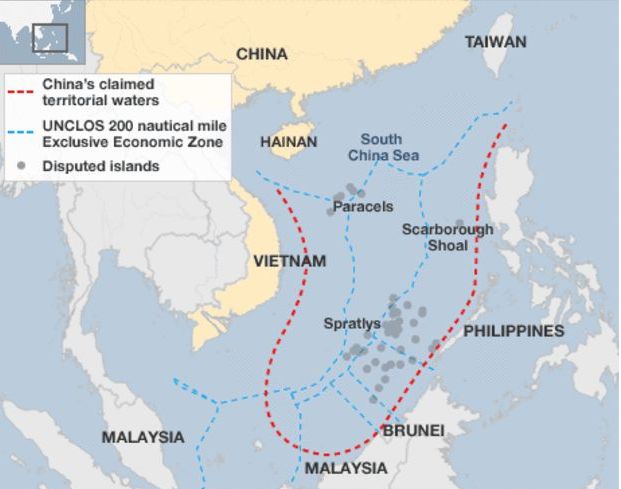
The ‘Land and
Water Maps Review Committee’ did not have the capacity to undertake its
own surveys, however. Instead, it undertook a table-top exercise: analyzing
maps produced by others and forming a consensus about names.
When it came to the
South China Sea, it is clear from the committee’s conclusions that its leading
references were British, which had far-reaching consequences. On 21 December
1934, the Review Committee held its twenty-fifth meeting and agreed on Chinese
names for 132 South China Sea features. All of them were translations or
transliterations of the names marked on British maps. For example, in the
Paracels, Antelope Reef became Lingyang jiao, and
Money Island became Jinyin dao (金銀島 Jīn yín Dǎo) –
both direct translations.
We know exactly where
the committee’s list of island names came from. It contains several mistakes,
which are only found in one other document: the ‘China Sea Directory’ published
by the UK Hydrographic Office in 1906. This British list is the origin of all
the names now used by China. Some of the names on the list had Chinese origins,
such as Subi Reef in the Spratlys, while others had
Malay origins (such as Passu Keah in the Paracels). Still, British navigators
coined more than 90 percent translating these names caused some difficulties
and a legacy that disturbs the region to this day.
The committee members
were confused by the English words ‘bank’ and ‘shoal.’ Both words mean an area
of the shallow sea: the former describes a raised area of the sea bed, the
latter is a nautical expression derived from Old English meaning ‘shallow.’
However, the
committee chose to translate both into Chinese as tan, which has the ambiguous
translation of ‘sandbank,’ a feature that might be above or below water. Sea
Horse Shoal, off the Philippines, was dubbed Haima Tan; James Shoal, just 100
kilometers off the coast of Borneo, was given the name Zengmu
tan, and Vanguard Bank, off the southeastern coast of Vietnam, was given the
name Qianwei tan. Zengmu is
simply the transliteration of ‘James,’ Haima is the Chinese for seahorse. Qianwei is a translation of ‘vanguard’ and tan, as
mentioned above, is the erroneous translation of ‘bank’ and ‘shoal.’ As a
result of this bureaucratic mistake, these underwater features, along with
several others, were turned into islands in the Chinese imagination. Ultimately
this screw-up s the reason why the Sapura Esperanza was harassed while drilling
for gas near the James Shoal eighty-five years later. China is prepared to go
to war over a translation mistake.
The committee
conferred the Chinese name Tuansha on the Spratlys. The name vaguely translates as ‘area of sand.’ In
1935 however, neither the committee nor the Chinese government was prepared to
claim the Spratlys.
The man who caused
China to claim non-existent islands hundreds of kilometers from its shores was
a Manchu who probably never went to sea in his life. Bai Meichu
was born into relatively humble origins in 1876 in Hebei province, 200
kilometers due east of the Forbidden City.
He became a schoolteacher
and then a teacher of teachers at the Women’s Normal School in Tianjin. There
he taught, among others, Deng Yingchao, a future
senior cadre in the Communist Party and the wife of Zhou Enlai. At the same
time, he was becoming a pioneer in the new subject of geography. This was not
yet geography as the later generation of the above mentioned Zhu Kezhen, and Zhang Qiyun would
come to define it but a hybrid of old ideas and new nationalism.
In 1909 Bai became
one of the ‘China Earth-Study Society’ (Zhongguo Dixue Hui). According to the historian Tze-ki Hon, none of
its members had any professional training in the subject. Instead, they
recruited members from the old literati. Like Bai, they were people who had
once expected to join the scholar-bureaucracy but were now struggling to
adapt.7
Members of the China
Earth-Study Society were also profoundly influenced by Social-Darwinism. In the
first issue of their ‘Earth-Study Journal’ (Dixue Zazhi) they collectively declared: ‘The cause [of the rise
and fall of power] is due to the level of geographical knowledge each group.
Thus, the level of geographical knowledge directly impacts a country, and it
can cause havoc to a race. It is indeed [a manifestation of] the natural law of
selection based on competition.’ In other words, the size of any group’s
territory ebbed and flowed depending on its relative civilization. In society's
view, China had advanced early but then retreated in the face of Western
advances. The only way to regain strength was to master geography. In the words
of Bai himself in 1913, ‘Loving the nation is the top priority in learning
geography while building the nation is what learning Geography is for.’8
A turning point for
Bai, like so many other intellectuals of the time, was the Versailles peace
conference's outcome in 1919. The decision to hand over the former German enclave in Shandong to Japan enraged
students and the Earth-Study Society members. Their journal carried several
articles denouncing the decision and urging the government to prevent the
expansion of Japanese influence on the peninsula.
At around this time,
Bai became a mentor to a young Li Dazhao, who had
also studied at Jingsheng College and would become
one of the founders of the Communist Party in 1921. It is possible that some of
Bai’s energetic views on geography and national territory were passed directly
into the communist movement.9
In 1929 Bai lost his
teaching post at Beijing Normal University and moved to the women’s equivalent,
instead. In 1935 he left university teaching altogether.
By chance, he came
across the ‘Programme for National Reconstruction’
(Jianguo fanglue) that Sun Yat-sen had
published in 1920, during his time in the political wilderness. This book
inspired him to devote his remaining years to Sun’s mission from Bai's own
account: from Bai's own account using geography to enable national reconstruction.
In 1936 Bai gave the
world his lasting legacy: a line drawn through the South China Sea. It was
included in a new book of maps, the New Atlas of China’s Construction (Zhonghua
jianshe xin tu), that Bai published for schools. He included some of
the new information about place names and frontiers agreed upon by the
government’s Maps Review Committee, published the year before. As was typical
of maps of this period, the atlas was, in many places, a work of fiction. A
bright red borderline stretched around the country, neatly dividing China from
its neighbors. The line was Mongolia, Tibet, and Manchuria, plus several other
areas that weren’t actually under the republican government's control. However,
the fictitiousness reached spectacular levels when it came to the South China
Sea.
It is clear that Bai
was quite unfamiliar with the South China Sea geography and undertook no survey
work of his own. Instead, he copied other maps and added dozens of errors of
his own making – errors that continue to cause problems to this day. Like the
Maps Review Committee, he was completely confused by the portrayal of shallow
water areas on British and foreign maps. Taking his cue from the names on the
committee’s 1934 list, he drew solid lines around these features and colored
them in, visually rendering them on his map as islands when in reality, they
were underwater. He conjured an entire island group into existence across the
sea center and labeled it the Nansha Qundao – the
‘South Sands Archipelago.’ Further south, parallel with the Philippines coast,
he dabbed a few dots on the map and labeled them the Tuansha
Qundao, the ‘Area of Sand Archipelago.’ However, at
its furthest extent, he drew three islands, outlined in black and colored in
pink: Haima Tan (Sea Horse Shoal), Zengmu Tan (James
Shoal), and Qianwei Tan (Vanguard Bank).
Thus, the underwater
‘shoals’ and ‘banks’ became above-water ‘sandbanks’ in Bai’s imagination and on
the map's physical rendering, he then added innovation of his own: the same
national border that he had drawn around Mongolia, Tibet, and the rest of ‘Chinese’
territory snaked around the South China Sea as far east as Sea Horse Shoal,
south as James Shoal and as far southwest as Vanguard Bank. Bai’s meaning was
clear: the bright red line marked his ‘scientific’ understanding of China’s
rightful claims. This was the very first time that such a line had been drawn
on a Chinese map. Bai’s view of China’s claims in the South China Sea was not
based upon the Review Committee’s view of the situation, nor that of the
Foreign Ministry. The result of the confusion generated by Admiral Li Zhun’s
interventions in the Spratly crisis of 1933, combined with the nationalist
imagination of a redundant geographer without formal academic training. This
was Bai Meichu’s contribution to Sun Yat-sen’s
mission of national reconstruction.
According to the
Taiwanese academic Hurng-Yu Chen, ‘Director-General of the Ministry of the
Interior Fu Chiao-chin . . . stated that the publications on
the sovereignty of the islands in the South China Sea by Chinese
institutions and schools before the Anti-Japanese War should serve as a
guidance regarding the territorial restoration issue.’ In other words, the
government would be guided by putative claims made in newspapers in the 1930s.
The meeting agreed that the entire Spratly archipelago should be claimed.
Still, given that only Itu Aba (Taiping Dao) had been physically occupied, the
claim should wait until other islands had actually been visited. This never
happened, but the claim was asserted nonetheless.
A key part of
asserting the claim was to make the names of the features in the sea sound
more Chinese. In October 1947, the RoC
Ministry of the Interior issued a new list of island names. New, grand-sounding
titles replaced most of the 1935 translations and transliterations. For
example, the Chinese name for Spratly Island was changed from Si-ba-la-tuo to Nanwei
(Noble South), and Scarborough Shoal was changed from Si-ka-ba-luo (the transliteration) to Minzhu
jiao (Democracy Reef). Vanguard Bank’s Chinese name was changed from Qianwei tan to Wan’an tan (Ten
Thousand Peace Bank). The name for Luconia Shoals was
shortened from Lu-kang-ni-ya
to just Kang, which means ‘health.’ This process was repeated across the
archipelagos, largely concealing the foreign origins of most of the names. A
few did survive, however. In the Paracels, ‘Money Island’ kept its Chinese name
of Jinyin Dao and Antelope Reef remained Lingyang Jiao. To this day, the two names celebrate a
manager and a ship of the East India Company, respectively.
At this point, the
ministry seems to have recognized its earlier problem with the translations of
‘shoal’ and ‘bank.’.’ In contrast, in the past, it had used the Chinese word
tan to stand in for both (with unintended geopolitical consequences), in 1947 it
coined a new word, ansha (Ànshā) –
literally ‘hidden sand’ – as a replacement. This neologism was appended to
several submerged features, including James Shoal, which was renamed Zengmu Ansha.
In December 1947, the
‘Bureau of Measurements’ of the Ministry of Defence
printed an official ‘Location Map of the South China Sea Islands’, almost
identical to the ‘Sketch Map’ that Zheng Ziyue had drawn a year and a half
before. It included the ‘U-shaped line’ made up of eleven dashes encircling the
area down to the James Shoal. In February 1948, that map was published as part
of the Atlas of Administrative Areas of the Republic of China. The U-shaped
line – with an implicit claim to every feature within it – became the official
position.
Therefore, it was not
until 1948 that the Chinese state formally extended its territorial claim in
the South China Sea to the Spratly Islands, as far south as James Shoal.
Clearly, something had changed in the years between July 1933, when the
Republic of China government was unaware that the Spratly Islands existed, and
April 1947, when it could ‘reaffirm’ that its territory's southernmost point
was James Shoal. What seems to have happened is that, in the chaos of the 1930s
and the Second World War, a new memory came to be formed in the minds of
officials about what had actually happened in the 1930s. It seems that
officials and geographers managed to confuse the real protest issued by the RoC government against French activities in the Paracels in
1932 with a non-existent protest against French activities in the Spratlys in 1933. Further confusion was caused by the
intervention of Admiral Li Zhun and his assertion that the islands annexed by
France in 1933 were indisputably Chinese.
The imagined claim
conjured up by the confusion between different island groups in that crisis
became the real territorial claim.
Pratas's islands now a conservation zone, from where visitors
can send postcards back home from a mailbox guarded by a cheerful-looking
plastic shark. Not far away is a new science exhibition explaining the natural
history of the coral reef and its rich marine life.
Overlooking the
parade ground (which doubles as a rainwater trap) stands a golden statue of
Chiang Kai-shek in his sun hat, and behind him is a little museum in what looks
like a scaled-up child’s sandcastle.
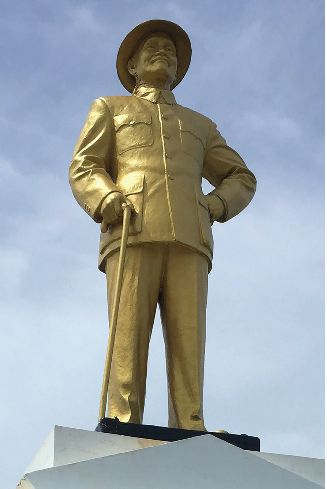
This museum holds, in
effect, the key to resolving the South China Sea disputes. Its assertion of
Chinese claims to the islets actually demonstrates the difference between
nationalist cartography and real administration. Bai Meichu
may have drawn a red line around various non-existent islands in 1936 and
claimed them as Chinese, but no Chinese official had ever visited those places.
The maps and documents on the museum walls tell the RoC
expedition's story to Itu Aba in December 1946 and a confrontation
with some Philippine adventurers in 1956. Still, in the absence of any other
evidence, the museum demonstrates that China never occupied or controlled all
islands. In the Paracels, it occupied one, or just a few, until 1974, when the
People’s Republic of China (PRC) forces invaded and expelled the Vietnamese
garrison. In the Spratlys, the RoC
occupied just one or two. The PRC took control of six reefs in 1988 and another
in 1994.
In the meantime, the
other countries around the South China Sea – Vietnam, the Philippines, and
Malaysia – took control of other features. The real history of physical
presence in the archipelagos shows how partial any state’s claim actually is.
The current mess of
rival occupations is, with some exceptions, the only one that has ever existed.
Understanding this opens a route to resolving the South China Sea disputes. By
examining the historical evidence of occupations, the rival claimants should
understand that there are no grounds for them to claim sovereignty over
everything. They should recognize that other states have solid claims to
certain features and agree to compromise. As the legal phrase goes, uti possidetis, ita possideatis – ‘as you possess, thus may you [continue to]
possess.’ Why should this be so difficult? Ultimately, it is because of the
emotional power that these territorial claims continue to exert. And those
emotions first stirred in Guangzhou in 1909.
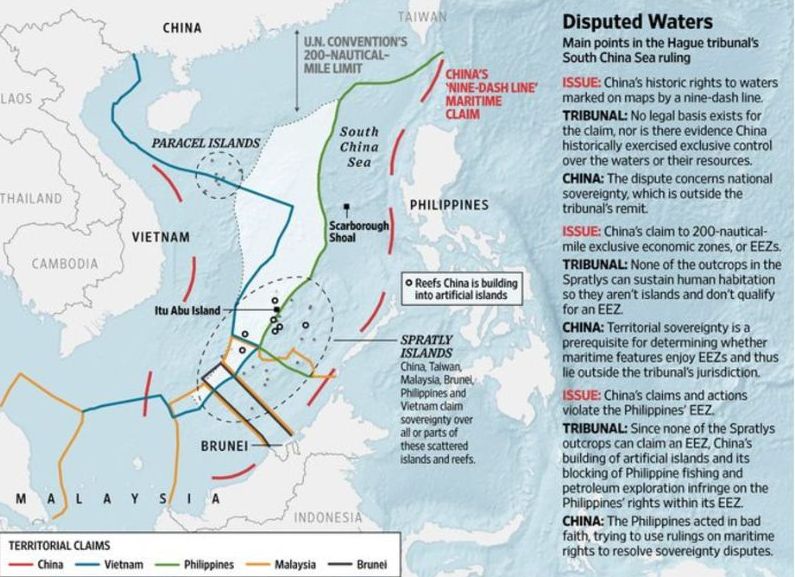
Conclusion
Under Xi Jinping, the
party has doubled down on the narrative. On 29 November 2012, shortly after
being anointed party general-secretary, Xi delivered a speech at
the National Museum of China in Tiananmen Square in which he unveiled his
big idea, the ‘China Dream’ [Zhongguo Meng (中国梦; pinyin: Zhōngguó
Mèng)]. He declared, ‘Achieving the great rejuvenation of the Chinese nation
[Zhonghua minzu (中华民族; Pinyin: Zhōnghuá Mínzú)] is the
greatest dream of the Chinese nation in modern times.’ Which goal is
‘resuming China’s historical international status’.
And as seen above,
there are many loaded ideas packed into that five-word phrase. What does Yan
mean by ‘resuming’ or ‘China’ or ‘status’? Which period of history is his
reference point? In the same interview, he glibly mentions the Han Dynasty of
2,000 years ago, the Tang Dynasty of 1,000 years ago, and the early part of the
Qing Dynasty, 300 years ago. It requires a nationalist imagination to regard
these three utterly different states as all representing an essential, timeless
‘China’. It demonstrates how every group that chooses to see itself as a nation
constructs myths around itself and, if they are successful, reconstructs the
state around those myths. Earlier East Asian states (‘dynasties’) did exactly this: they
sought to present themselves as the legitimate successors to their discredited
predecessors.
Xi thus extended
support in the party and the society by appealing to nationalistic sentiment by
trumpeting the “Chinese Dream of the great rejuvenation of the Chinese nation”
and pursuing foreign policies for expanding the “core interests.” Xi also
played up China’s international leadership by promoting the “Major
Country Diplomacy with Chinese Characteristics.” Similarly, the Belt and Road Initiative strengthens
Chinese strategic autonomy by enhancing its key positions along with networks
of capital and infrastructure around the world, foster asymmetric partnerships,
maximize its influence and consolidate
its control overland routes from Central Asia to Europe and the SLOC beyond
the South China Sea.
The People’s Republic
is now an ethnocracy, a racially defined state, still in thrall to the
nationalist myths constructed in the late nineteenth and early twentieth
centuries. Under Xi Jinping, the Communist Party has worked to impose ever
tighter boundaries around legitimate expressions of Chinese-ness. Xi and his
fellow leaders have put increasing emphasis on the ‘four identifications’, and
added a fifth. They insist that all Chinese citizens must identify with the
motherland, with the Chinese nation (Zhonghua minzu),
with Chinese culture, the Chinese socialist road,– and the Chinese Communist
Party itself. It hardly needs saying that the party regards any suggestion that
a Tibetan
or an Uyghur
might prefer to live under another government, that a Mongol might not be
willing to embrace a homogenizing view of the nation, that speakers of regional
topolects might prefer not to speak Putonghua, or that any of them might reject
the leading role of the Communist Party, as treasonous. As we are seeing in
Hong Kong (at the time of writing), Xi Jinping’s problem is that the more
worried the Communist Party becomes about national fragmentation, the more it
tries to impose national unity, and the more it generates a reaction in the
opposite direction.
How should the region
and the world respond to these historical myths? They need to be taken
seriously as drivers of Chinese behavior but not as statements of historical
truth, still less as a guide to the correct order of society or regional
relations. Too many people have already been taken in: there are plenty of
foreign commentators happy to parrot lines about ‘5,000 years of superior civilization’ or ‘the
unity of the Han race’, without any understanding of where these concepts come
from. As a result, they give Chinese nationalism a free pass. A country that
believes it has a superior civilization, that its population evolved separately
from the rest of humanity and that it has a special place at the top of an
imperial order will always be seen as a threat by its neighbors and the wider
world. Chinese nationalism is (as Anthony D. Smith has shown) subject to a
critique just as much as any other form.
1. Chang Naide 1986. A Brief History of the Chinese Nation, 中华民族小史. Shangxi: Aiwen Bookstore, 爱文书局 pp5–6
2. Pamela Kyle
Crossley, ‘The Rulerships of China: A Review Article’,
American Historical Review, 97/5 (1992), pp. 1471–2.
3. Marijn
Nieuwenhuis, ‘Merkel’s Geography: Maps and Territory in China’, Antipode, 11
(June 2014),
https://antipodefoundation.org/2014/06/11/maps-and-territory-in-china/
4. John M. Friend
(Author), Bradley A. Thayer (Author) How China Sees the World: Han-Centrism and
the Balance of Power in International Politics, 2018, p.131.
5. Yi Wang, ‘Wang
Huning: Xi Jinping’s Reluctant Propagandist’, http://www.limesonline.com, 4
April 2019,
http://www.limesonline.com/en/wang-huning-xi-jinpings-reluctant-propagandist
6. Haig Patapan and Yi Wang, ‘The Hidden Ruler: Wang Huning and the
Making of Contemporary China’, Journal of Contemporary China, 27/109 (2018),
pp. 54–5.
7. Wu Feng-ming, ‘On the new Geographic Perspectives and Sentiment of
High Moral Character of Geographer Bai Meichu in
Modern China’, Geographical Research (China), 30/11, 2011, pp. 2109–14.
8. Ibid., p. 2113.
9. Tsung-Han Tai and
Chi-Ting Tsai, ‘The Legal Status of the U-shaped Line Revisited from the
Perspective of Inter-temporal Law’, in Szu-shen Ho
and Kuan-Hsiung Wang (eds), A Bridge Over Troubled Waters: Prospects for Peace
in the South and East China Seas, Taipei: Prospect Foundation, 2014, pp.
177–208.
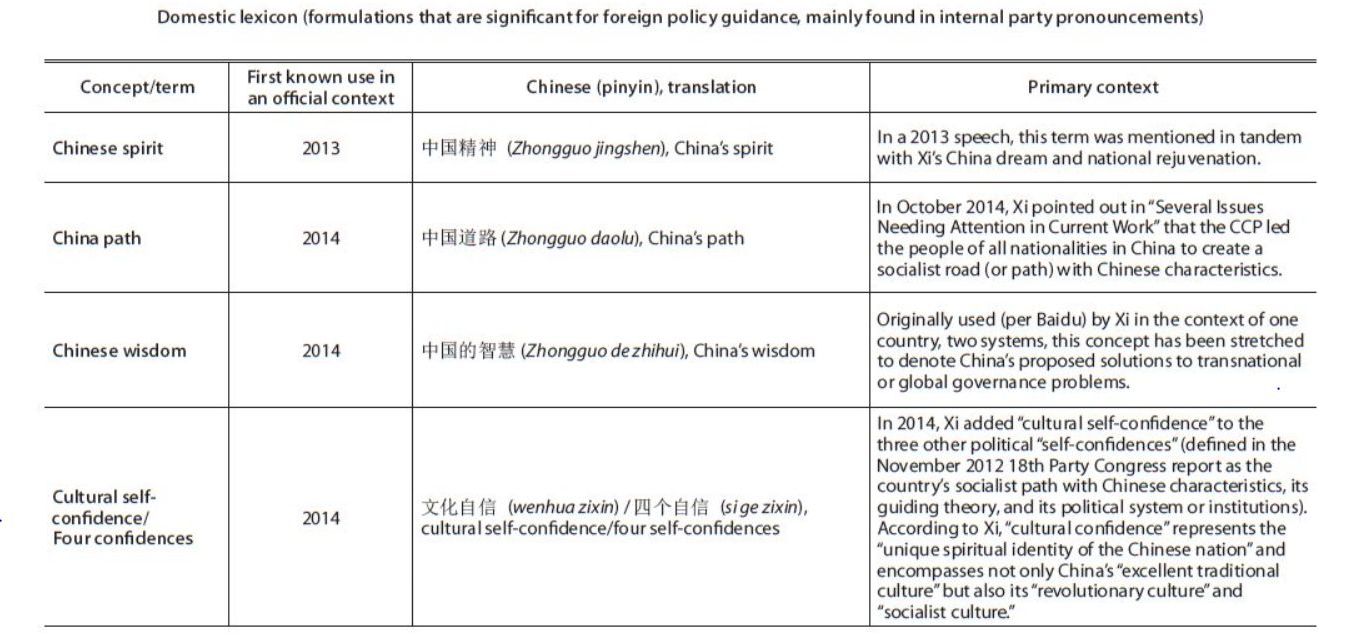

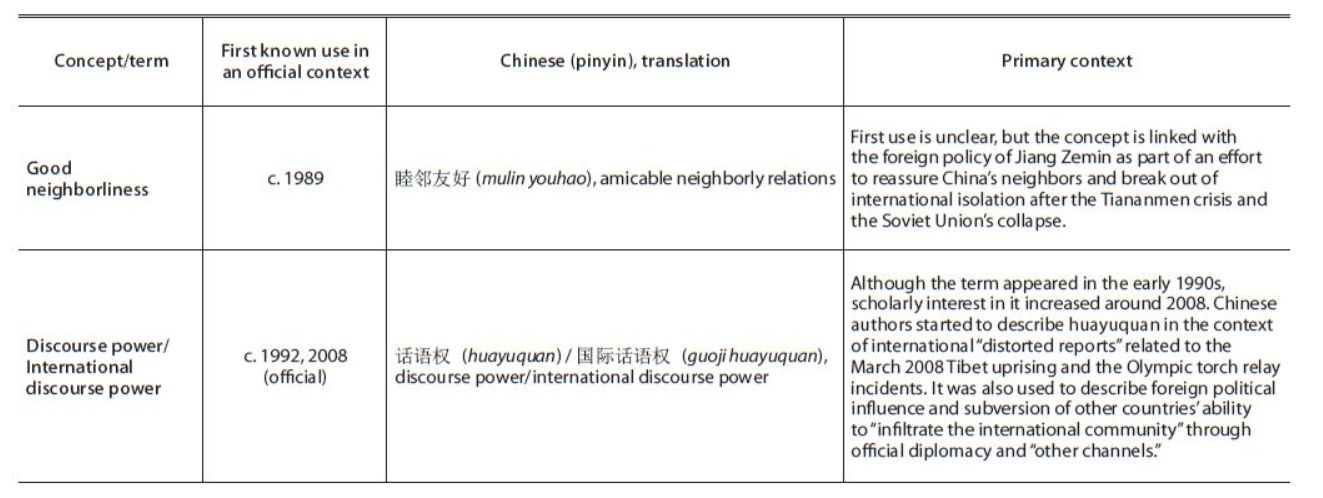
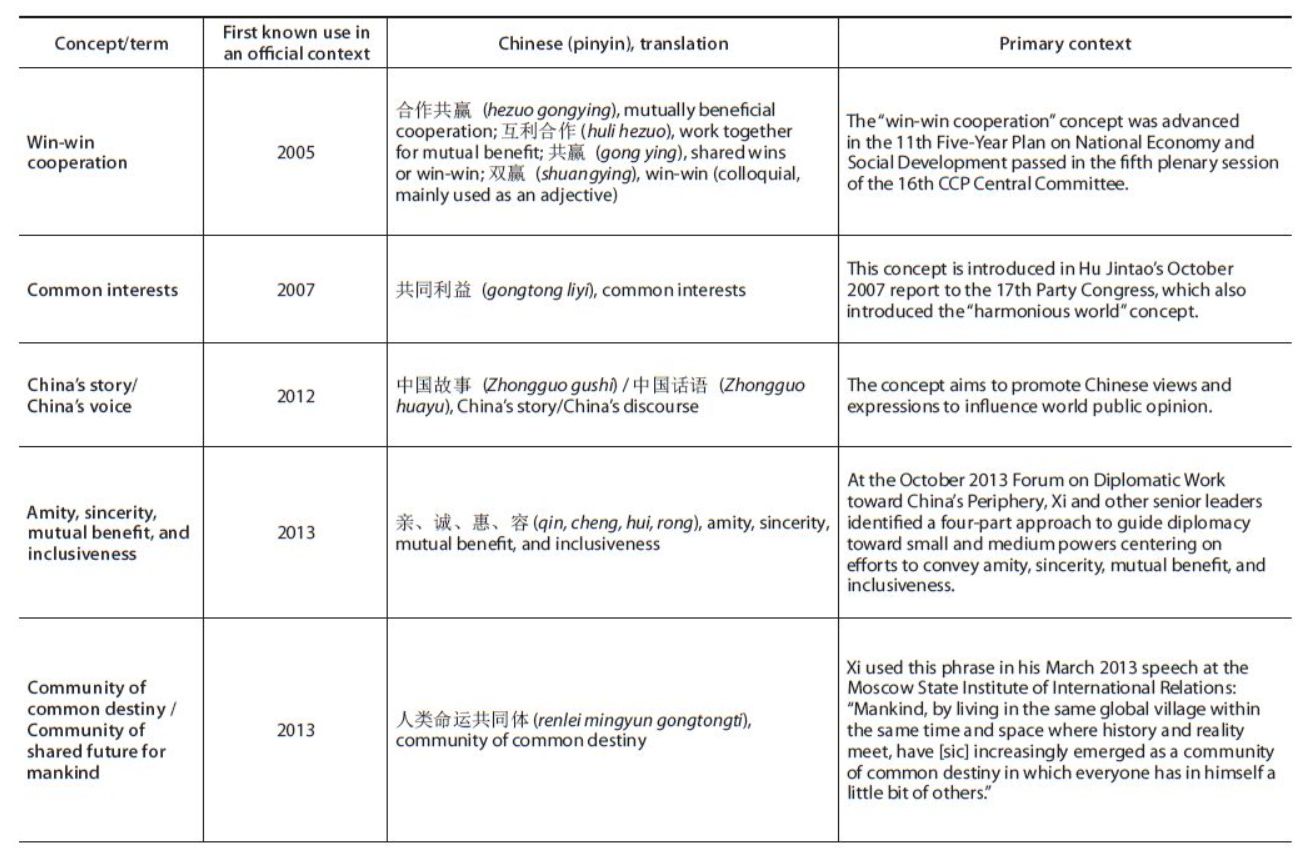

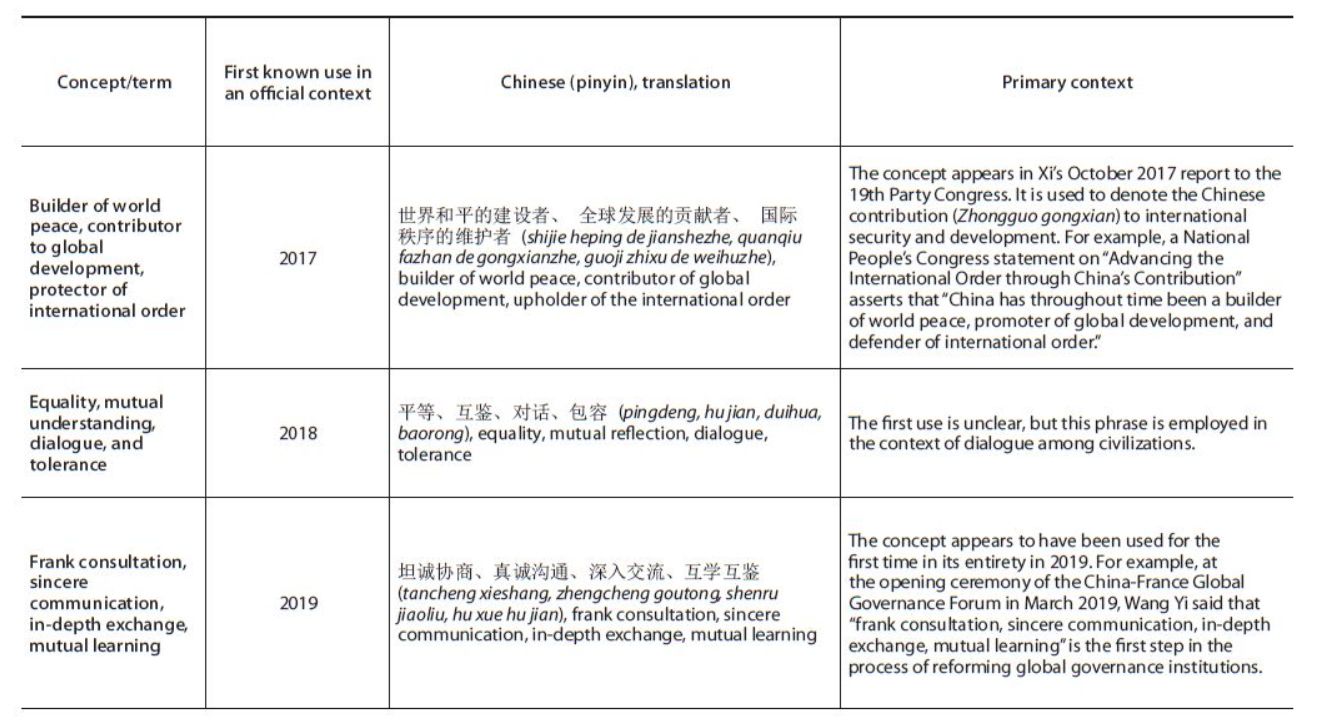
For updates
click homepage here